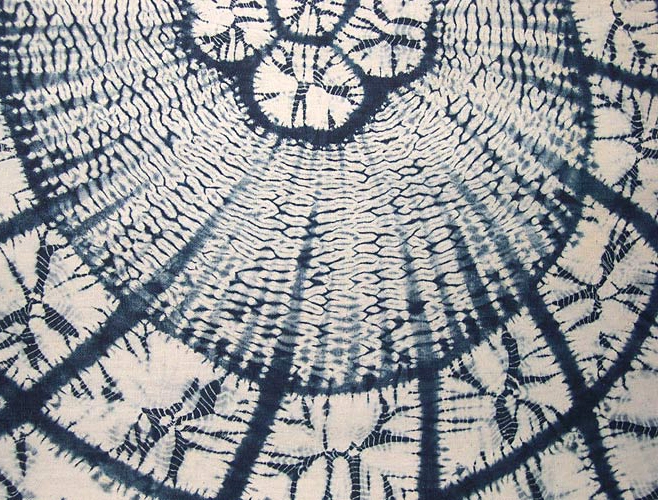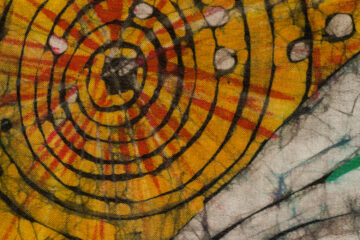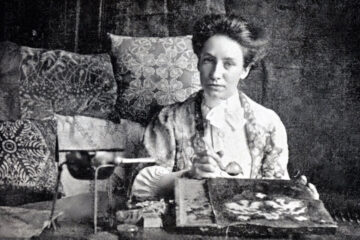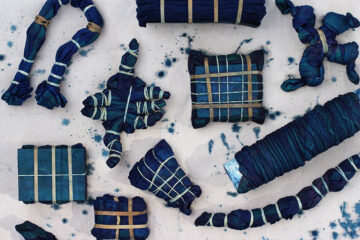Hot batik techniques are among the oldest methods of batik art. Originating from Java, Egypt, and China, this technique involves the preservation of independent elements while applying them to fabrics step by step. Before applying this technique, natural components that can be heated are used. Previously, a composition that included beeswax was applied using thin-nosed copper clamps. Nowadays, special tools have been developed for hot batik. All these topics have been researched for you by www.novatelier.com.
Hot Batik Techniques
Artistic development has also led to changes in the use of the hot batik method. Many new tools have enabled this technique to be applied in a more aesthetic manner. These tools can be listed as follows:
- Special molds
- Brushes with stiff bristles
- Different types of paints
This technique also involves a resist application, and artists use many different alternative methods to implement this application. While the resist is applied to a large surface with a broad brush, a finer brush is used to separate the contours and delicate details of the design. Before applying hot batik techniques, you must prepare the fabric of your choice. To do this, you should soak the fabric in a soda solution for 30 minutes. For this, you should use five liters of water with a teaspoon of soda. The purpose of this process is to remove the chemicals used by fabric-producing companies from the fabric. This way, patterns can be easily removed from the fabric.
What are the Next Steps?
After being soaked in a soda solution and left for 30 minutes, the fabric is removed and left to dry. This process is carried out by fixing the fabric to a frame. Before any patterning is done, the first layer of paint should be applied. This is achieved by applying the lightest paint. To have a color scale on the fabric ranging from dark to light colors, it needs to be impregnated. The drawing is made with a special pencil. Special and delicate materials should be used for hot batik techniques. Some apply different techniques to avoid damaging the fabric. For instance, instead of drawing directly on the fabric, they draw on canvas and transfer it onto the fabric. The drawn design is thoroughly soaked into the fabric, and the areas not covered with the previously used light paint are left free. After the paint has dried, the wax and iron used as a resist are removed from the fabric. The wax is removed by ironing the fabric covered with straw paper. Then, the paint is fixed appropriately.
“As an art form, batik is based on patterning fabrics.”
“After these processes, a resist solution is reapplied to the painted and dark-colored sections. The same procedures are repeated once more. Paint containing the resist is applied layer by layer until the desired shades emerge on the fabric. Thus, the desired artwork is created. This technique is also known as Shibori. Now, let’s delve into Shibori.”
Shibori Technique
When talking about hot batik techniques, Shibori comes to mind. Originating in Japan around the 8th century, this technique has spread worldwide from there. Generally, indigo blue is preferred in this technique, and the following products are used:
- Wooden pieces
- Straw threads
- Wool fabrics
- Silk fabrics
- Linen fabrics
- Cotton fabrics
Shibori is primarily done with a powdered dye. Various colors can be used. You fold and gather the fabric as desired, then secure it with wooden pieces or clips before dyeing. If you want to create patterns in a circular shape, you can place beads or pebbles inside the rubber bands you use to tie the fabric.
For this, you need to use a teaspoon of indigo blue dye in two liters of water. Depending on the type of dye, you can use salt or a fixative. You can wrap fabrics around wooden rods and wrap threads around them to create different patterns. After the dyeing process, you dry the fabrics, remove the rubber bands, and take out the beads. Shibori holds a significant place among hot batik techniques. Finally, by rinsing the fabrics with cold water, you fix the colors in the fabrics, which are then left to dry. Shibori is done with four techniques: tying, sewing, pressing, and dripping.
Tying Technique
Fabrics that are not to be dyed or are of a light color are tied to reveal the desired pattern. The dyeing process progresses from light to dark colors step by step. In our country, when batik is mentioned, this technique comes to mind, and everyone can easily apply this technique.
Sewing Technique
Pressing Technique
Dripping Technique
These techniques are methods of painting on fabric. Silk or other slippery fabrics are used. After the fabric is pre-treated, it is dried, stretched on a frame, and fixed. Without creating any design, a salting technique is applied to the flat fabric. If the fabric is moistened, the result is better. The fabric is painted with a brush or cotton. Before the paints dry, silk salt, crystal salt, or rock salt is sprinkled onto the desired areas, and the fabric is then dried.




Great post
We thank you
Great
We thank you
Thanks
We thank you